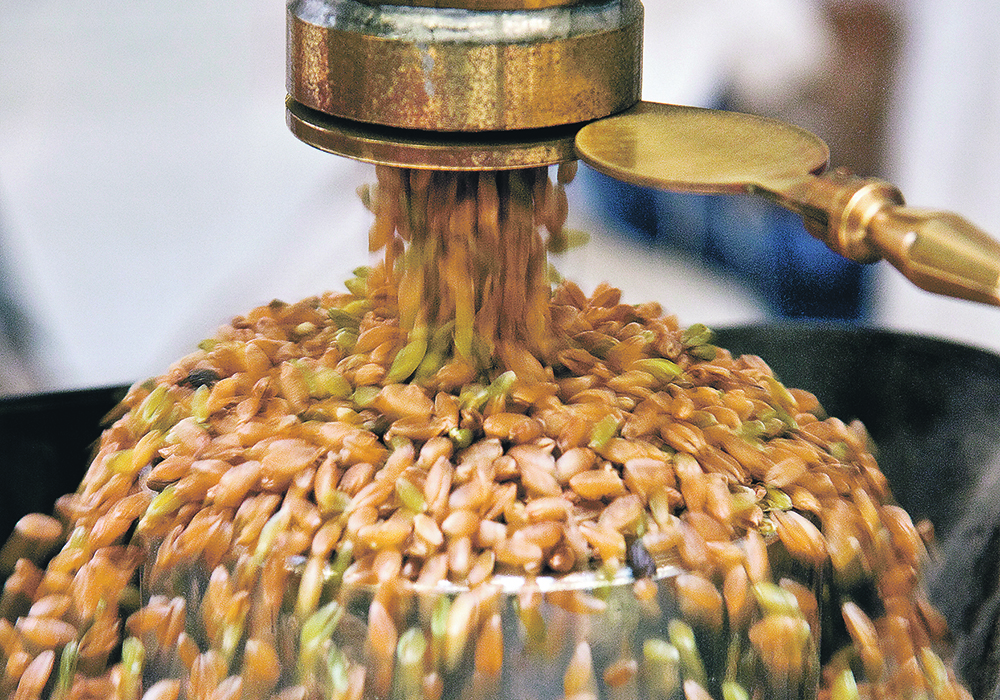Lab testing shows certified seed supplies are some of the highest qualities in years with extremely high germination rates
Farmers can look forward to putting some of the best-performing seed ever into the ground for 2023, said Sandy Junek of Discovery Seed Labs in Saskatoon.
“Everything so far is looking like we’re going to be set up really well for spring 2023,” he said.
Junek was speaking to the annual general meeting of the Saskatchewan Seed Growers Association on Jan. 12 held in Saskatoon and online.
While the drought year of 2021 ravaged seed quality and quantity, this year’s supply is expected to be much improved.
Read Also

Europe holds promise for Canadian lentils
Pulse Canada is trying to help boost lentil consumption in Europe, which is already the fourth largest market.
“Germination rates in the lab are generally good to very good,” he said. “I think the averages are probably the highest they’ve been in the last five years, which is nice to see.”
Wheat samples tested with an average germination of 95 percent, with only 1.5 percent of samples coming in below the 85 percent line. This was down from 2.5 percent last year. These results were similar to durum, which had 93 percent germination with three percent below the 85 percent mark.
More striking was barley, which averaged 95.5 percent germination this year and three percent of samples falling below 85 percent — down from 13 percent the previous year.
Oats are also scoring well, at 96.7 percent germination with two percent of samples below 85.
“Oats are doing well,” Junek said. “Average germ is I think the highest it has been since I’ve been at Discovery; that’s about 13 years.”
Field pea seed quality also saw a big improvement over last year, with average germination of 90 percent, up from 81.5. Only 13 percent of samples scored below 85 percent germination, versus 43 percent the previous season.
Junek cautioned that most germination tests were done on pre-cleaned samples and so might be a bit better than seed that takes some damage during cleaning.
Lentil seed quality also came in strong, at 96.6 germination, and only 0.8 percent of samples below 85 percent. Flax also performed well, with an 88 percent germination score. Seventeen percent of samples came in at below 85 percent, down from nearly 30 percent last year.
Vigour scores for all crops were strong as well.
Mike Shewchuk said if there is a downside to this spring’s seed story, it’s that new varieties have been delayed due to low production numbers. Shewchuk became SSGA past-president at the meeting as Gravelbourg producer Kurt Printz was elected to the president’s chair.
“That really almost set things back a year so we had varieties that should have been available this year that aren’t quite there due to last year’s low supplies,” said Shewchuk, who farms near Blaine Lake. “But for the most part, if people are looking for a certified seed for most varieties that are a couple of years old, the supply is there.”
While Junek said the figures presented are provincial averages, he invited interested growers to call him for district-specific numbers.
He said that while some pockets still languished in drought, most of the province saw rains return and with them, diseases in both cereals and pulses, although at manageable levels.
“We broke up the total fusarium by crop district and also the range we’re seeing,” he said. “There are samples at the very low end zero disease but then we are seeing some samples that have that total fusarium a little bit higher than it was last year. These are things to pay attention to.”
To keep seed lots as disease free as possible, he said growers can start with seed treatments and increase seeding rates to reduce the number of tillers to make fungicide application easier. Fusarium-resistant varieties should also be grown where the disease is present.
The lab also provides soil testing for clubroot and both seed and tissue testing for Group 11 fungicide-resistant anthracnose and aschochyta. Junek said plant tissue and seed tests are also available for bacterial leaf streak, which has been found in several Saskatchewan fields.















